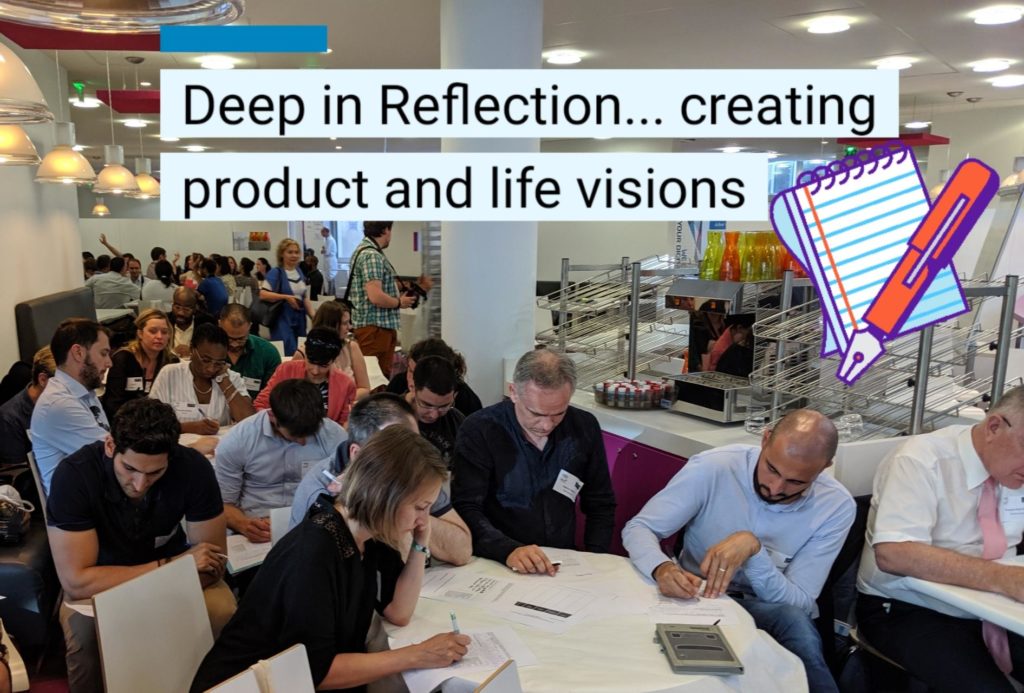How many times have you left a meeting or social function feeling like it was a waste of time or not what you expected? Sometimes this could be due to hi-jacked or unfocused discussions (going off the rails and expanding the scope) arriving at no decision or an ambiance you really do not click with.

If you are organizing a meeting or social function with a purpose, an easy way to put things in your favor is by framing the context and setting the rules “to play by” or guidelines from the very beginning. This can also be considered a “social contract”.
This works, as no one wants to waste time or step on toes but sometimes we get lost guessing our role and the role of others and navigating invisible social rules. Materializing and clarifying these rules is also a great group bonding experience!
How it works
Where: Any get together: meeting, meetup, social function with a purpose. From 2 to 2 thousand people, though adapt the breadth of the rules to the size. Yes, even at the start of conferences! You will just have to organize a little bit more differently to get feedback.
Where not: If this is a holiday party with no objective to arrive at a result (unless it’s a speed dating ;p) this may be overkill. Also, yes, the rules for two people are different than those for 10. In fact, if small, may be best to create these rules together quickly in the beginning versus dropping an imposing structure on your collaborator(s).
Materials: Write the guidelines as you explain them and keep them visible throughout the full session. So any material to do so, such as a poster or white board, is necessary. Just having the guidelines in the first slide of a powerpoint is not as effective. Writing them with space for more items allows for people to voice their feedback and for you to easily add or modify the guidelines. You could have very easily not thought of everything, that is the power of the group.
Alert! Open and reusable: It is important (especially) when you do this the first time to see it as just a draft, open to feedback. In fact, crave it ! It is a social contract so the group must feel comfortable to continue. These guidelines often can be and should be reused like any contract. So once you set them together, just need to remind the group before each appropriate meeting, ask for feedback and adapt if context changes.
Steps (should take around 10 minutes max):
- First introduce the reason for getting together and the objective. Be sure to ask for feedback, modifications and if it is clear. Example: We are here to decide on the vision and next steps for the home-owners association. Our objective is to finish with a vision statement and list of first actions for the upcoming spring).
- Explain the Agenda
- Then reveal the guidelines, setting the mood. One by one is best. Ask for suggestions to modify, add or delete. Briefly also explain WHY each was chosen. Example (suggest you write only the title of each item and say the rest):
- Open Minds – No ideas are bad ideas. Judgmental free zone.
- Community in your image – Constructive feedback is welcome. Any ideas to improve our collaboration or initiatives you would like to own are welcome. To discuss at time allotted at end.
- Efficient Timing – Keep to the timing to ensure we get everything done. We can always adapt the agenda for next time if structure is too tight.
- Listening – One person speaking at a time. Please leave the room for side conversations or to answer phone. We will save time at end for discussions and catching up.
- Have fun! – Let your minds be creative.

Some notes:
- I find these guidelines are especially important before a brainstorming session or soft-skills workshop to ensure everyone is in the right spirit.
- Notice word choice for the titles is important (as they will be seen over and over again). I suggest positive wording over negative. Instead of saying what NOT to do (lots of research points to why this does not help behavior change) say WHAT you gain. Also, avoid any phrasing that is too authoritarian… no one likes to feel like you are back in school. So instead of ‘Do not go over time.’ or ‘Respect the timing’ I chose ‘Efficient Timing’. You will gain a more positive mindset culture and increase likelihood of engagement.
- A bonus perk, is just in constructing these rules with your collaborators (perhaps in a planning pre-meeting or even live with the participants) you are also creating connections, removing potential communication roadblocks and solidifying your own vision.
- These guidelines could become team guidelines or values. Great idea for a community with a long life and for building and promoting a specific culture.
Let me know if you try it out!

